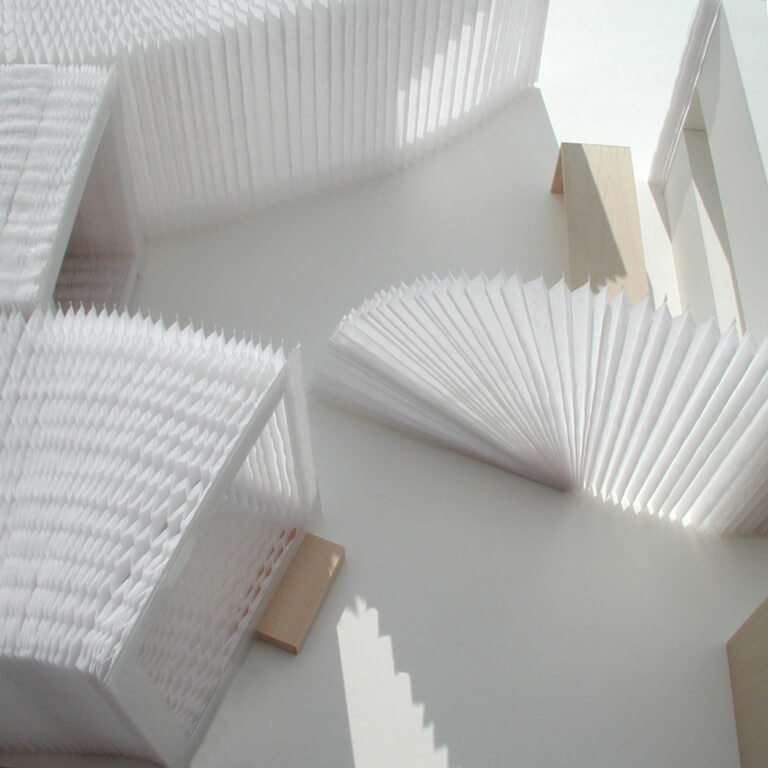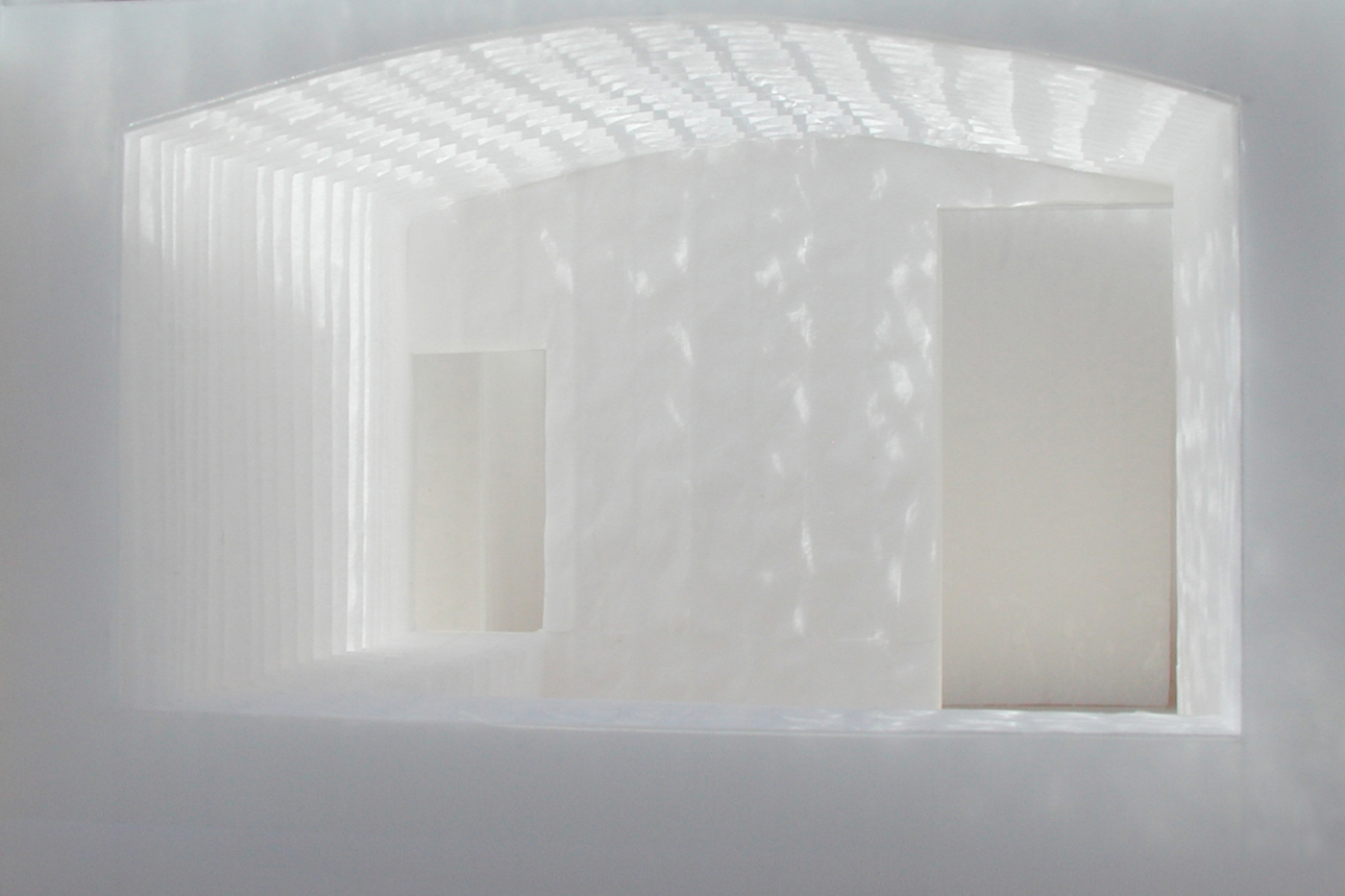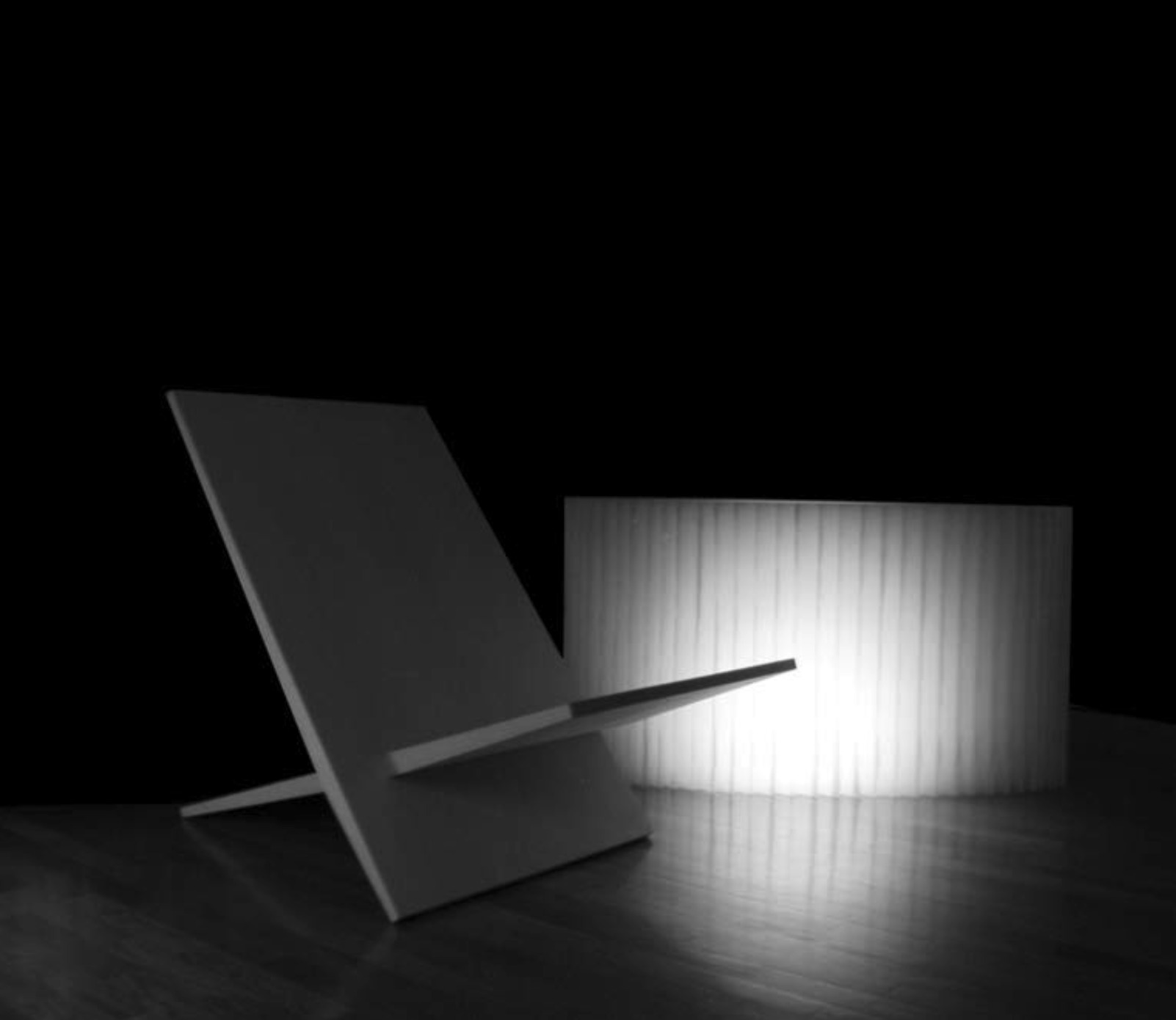
in 2001, Stephanie Forsythe + Todd MacAllen set up their first home and studio in Vancouver in a small open room with a separate bathroom. Their first projects examined habitation in dense communities and how to make the most of a home with limited space. Inspired by their early experiences in Columbia and The Gambia and their own live/work studio, they began a long study of how to partition space in a light and flexible way by developing their “soft” concept for flexible interior architecture, furniture and lighting.

2003 - Design Beyond East and West Competition (Korea and China)
in 2003, Stephanie + Todd won the Design Beyond East and West competition. Their objective was to critique the modern industrial paradigm of how we build and live, think beyond the contemporary models in the Eastern and Western hemispheres, and build in a sustainable, adaptable way that protects the health of our environment.
"The work presented a new concept. It was a design on new spaces that breaks from the existing concept common in the present interiors. Employing new materials and new process technology, the winner was able to come up with a novel design that allows different divisions of the space. With the mode of interior proposed in the work, you can adjust the space to your liking, small or large, to achieve a variety of space size and very flexible planning." - Jury: Alessandro Mendini (Italy), Kazuyo Sejima (Japan), Seok-chul Kim (Korea), Shi-Li Zhang (China)



2003 - First Step Housing Competition (New York, USA)
in 2003, Forsythe + MacAllen were awarded first prize for their softhousing entry in the First Step Housing Competition. The concept included ideas for flexible honeycomb rooms with integrated seating, beds, walls and ceilings, along with independent, flexible honeycomb benches that could be taken into the common areas or used anywhere. Forsythe + MacAllen understood they couldn't make the single-room occupancy apartments larger but could make a more critical contribution through the multisensory aspects of a design.
the requirement of an open ceiling (typically made with steel chain-link fence materials) was given beauty with a vaulted honeycomb structure that filtered reflected sunlight and electric light into the rooms luminosity - Stephanie + Todd tested several translucent materials, including many different papers, non-woven textiles and plastic sheets. Despite its fragile nature, they chose translucent tissue paper. They were taken entirely by how it looked, felt, and sounded, and they especially appreciated the gentle way it held and emitted sunlight and other light sources.
2003 - LighTouch Competition (Italy and Singapore)
in 2003, Stephanie + Todd won first prize in the LighTouch lighting Competition. Their proposed lighting concept was to create and envelop an architectural space with glowing light while also making light a flexible element within a space.
these studies varied in scale from a pavilion to a room, fragment of room or furniture. A glowing table is a gathering place, and a room becomes a private place of repose, yet it can also be a lantern. The illumination can come from within the piece; it can be integral to the piece, pass through it from another source, or be reflected off it. Stephanie + Todd worked to conceptually reduce the house to a set of spaces and then further abstract the spaces into furniture components – walls, ceilings, beds, benches, etc. It became more apparent that these components could be flexible, luminous, and further reduced to modular, sculptural elements.


decades of study
over three decades, Forsythe + MacAllen have been studying the concept of flexible spacing making and its impact on how we live and work. Multiple iterations of the groundbreaking soft collection have been put to use and featured in over 100 institutions around the world, including the MoMA and the Nobel Prize Museum. Explore the full collection:
space partitions
lighting
furniture
 Photo Credit: Barry Gnip
Photo Credit: Barry Gnip
 Photo Credit: Alana Peterson
Photo Credit: Alana Peterson


